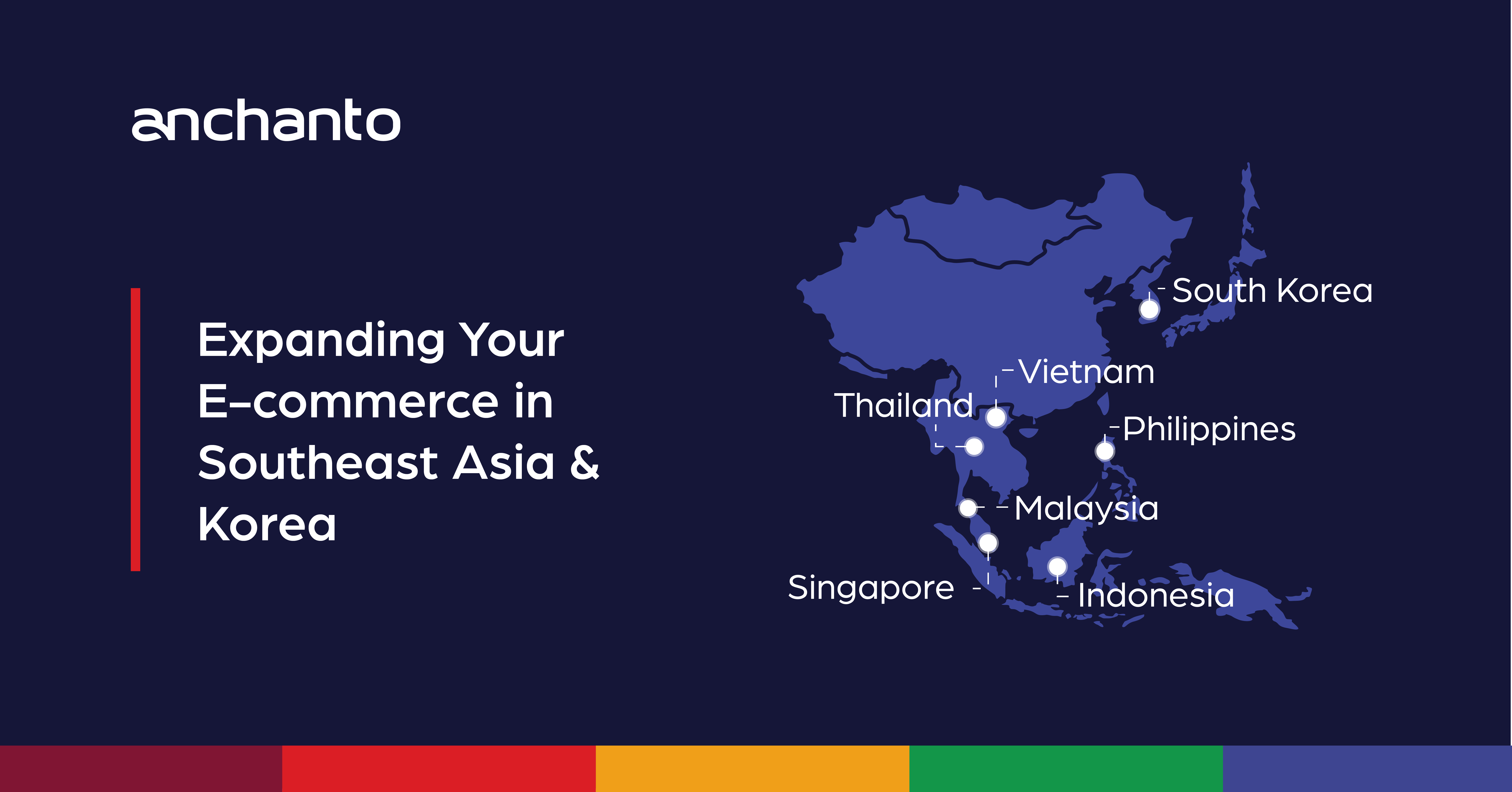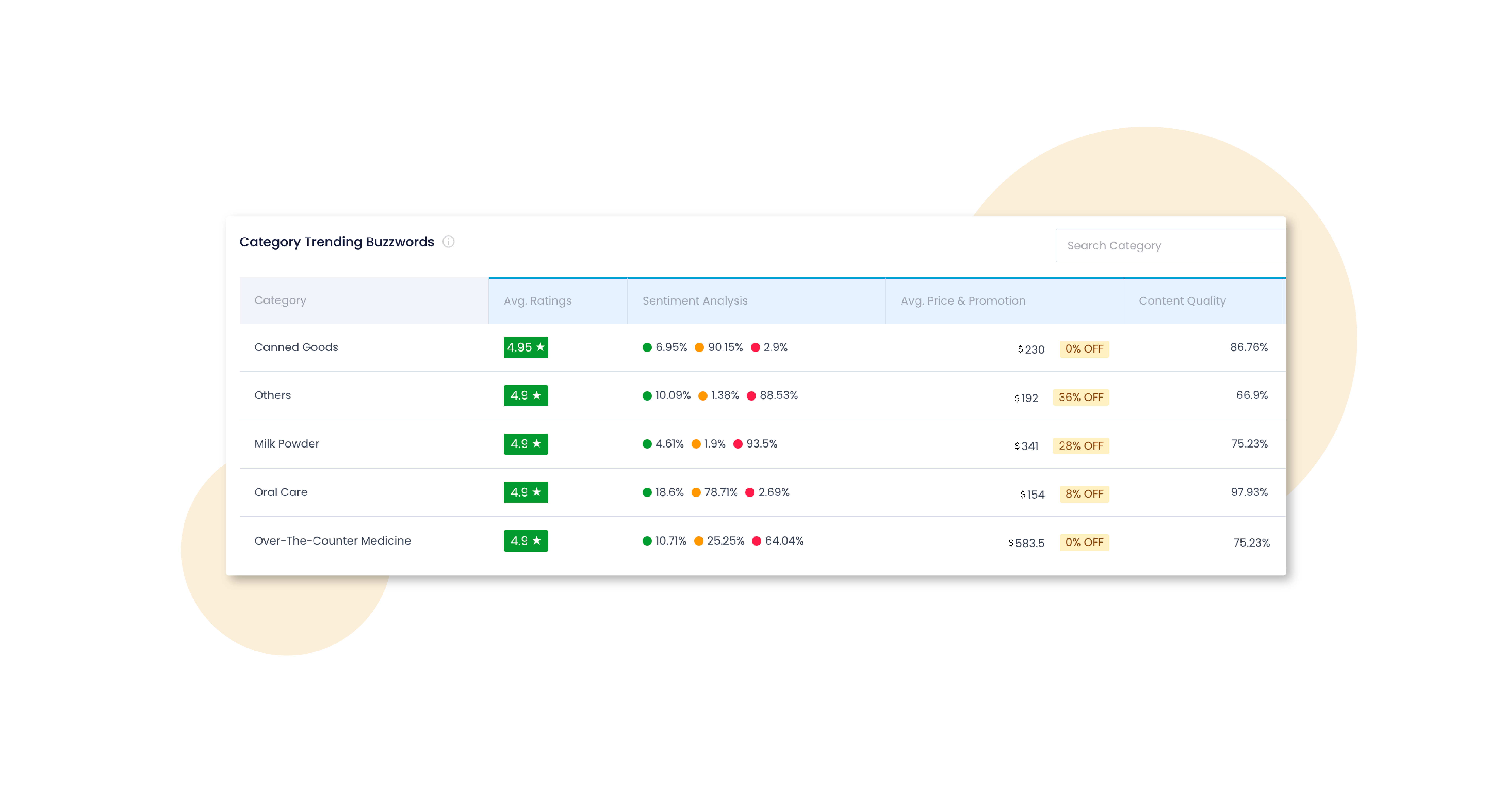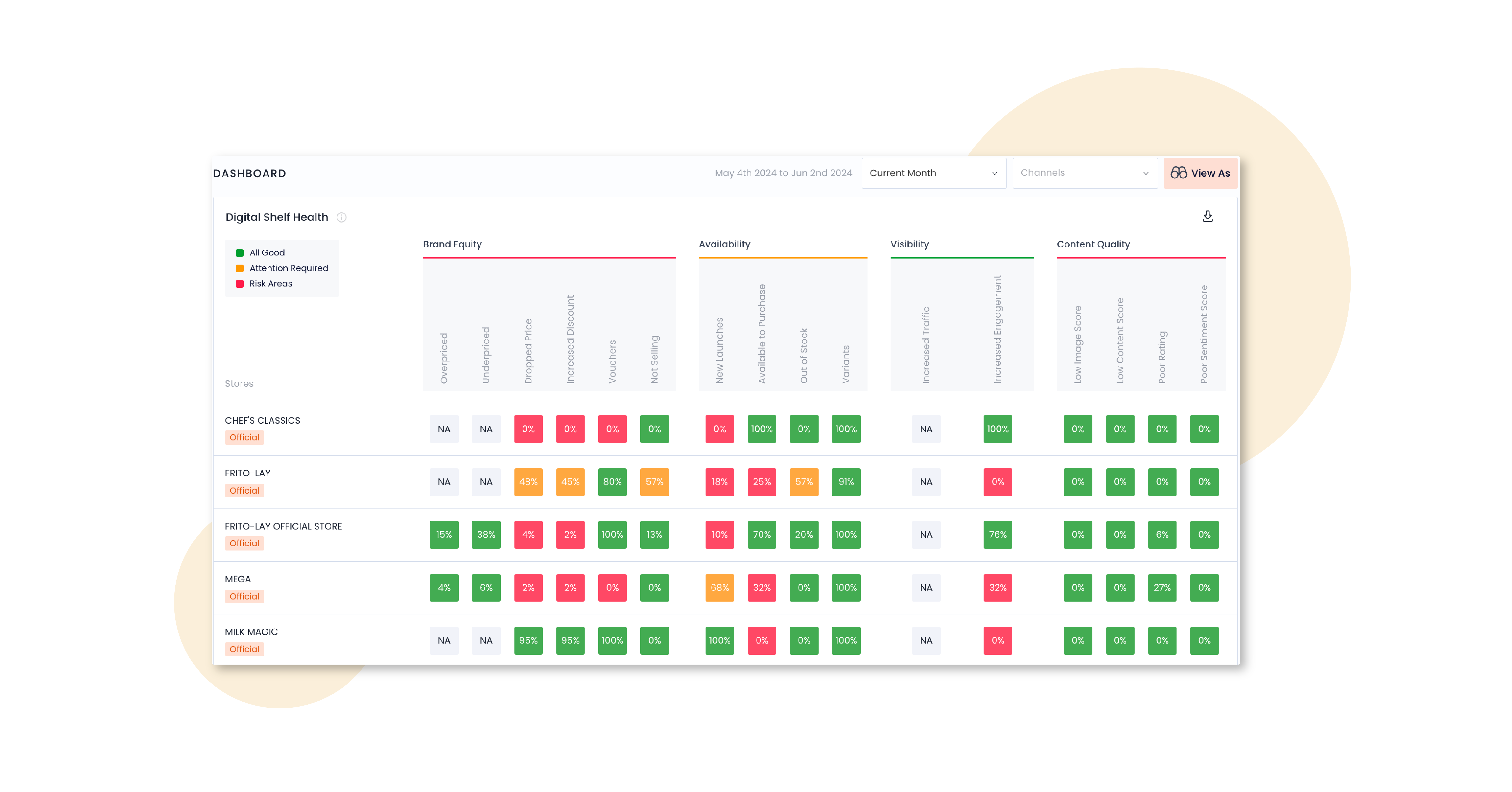
Looking to expand your company’s market share in Southeast Asia and Korea? You’re in luck, because the e-commerce scenes in these areas are booming. The internet economy in Southeast Asia has been growing exponentially and is likely to reach US$ 363 billion by 2025, according to Statista [1]. Currently, Indonesia leads by e-commerce market size. But in the coming years the Philippines and Vietnam are likely to experience the most growth. E-commerce is also popular in South Korea, with over 97% of locals from 20 to 39 (years of age) using internet shopping [2].
So, Southeast Asia and Korea present a massive opportunity for businesses to scale their operations and increase their revenue. However, with fierce competition and cultural nuances, breaking into these markets can be a daunting task.
But fear not! With our expert advice and proven strategies, you can gain the knowledge and tools needed to navigate the complexities of these regions and carve out a profitable presence across leading e-commerce platforms. From localizing your marketing campaigns to optimizing your product listings, we’ll cover it all.
Before we get started on what you need to do, knowing how e-commerce works in these regions is vital. To provide you with the details you need, we have curated this guide to help you see the value in:
- Understanding the e-commerce landscape in Southeast Asia and Korea
- Market Research and Analysis for Targeting Cross-Border E-commerce
- Optimizing Your Product Listings and Descriptions for Local Markets
- Implementing Effective Digital Marketing Strategies for Increased Visibility
- Overcoming Challenges and Adapting to Local Regulations and Policies
- Measuring Success and Evaluating the Effectiveness of Your Market Expansion Efforts
- Conclusion
Understanding the E-commerce Landscape in Southeast Asia and Korea
Expanding your company’s e-commerce market share in Southeast Asia and Korea requires a deep understanding of the industry in these regions. Each country in Southeast Asia has its own unique market dynamics, consumer behaviors, and cultural preferences. Similarly, Korea has its own distinct e-commerce ecosystem that differs from other Asian markets.
Southeast Asia is home to several prominent e-commerce platforms, such as Lazada, Shopee, Zalora, and Tokopedia, which dominate the online shopping space. Lazada, backed by Alibaba, has a strong presence in several countries, while Shopee offers a mobile-first approach and is popular among young consumers. Tokopedia dominates the Indonesian market and is known for its wide range of products.
It’s important to research and identify which platforms are most popular in each country to effectively target your audience. For example, a 2024 Statista report states that Shopee was the most visited e-commerce website in Vietnam, the Philippines, Thailand, and Malaysia [3]. So, it could be a great place to start selling your products if you plan on targeting consumers in these countries.
Korea, on the other hand, has a highly developed e-commerce market with a tech-savvy population. As of today, platforms like Coupang, Naver, Gmarket, and 11Street are widely used by Korean consumers. Coupang is the dominant player with a reputation for fast delivery and excellent customer service. Gmarket, owned by eBay Korea, is another popular platform with a wide range of product categories.
Each platform has its own strengths, user base, and reach. It’s important to carefully evaluate your options and choose the platforms that align with your business goals and target audience. Understanding the preferences and habits of Korean online shoppers will guide you to success in this market.
Selecting the right e-commerce platforms is crucial for expanding your market share in Southeast Asia and Korea. Assess the strengths and weaknesses of each platform to determine where your products will perform best.
Market Research and Analysis for Cross-Border E-commerce
Before expanding your market share in Southeast Asia and Korea, thorough market research and analysis are essential. This will help you identify potential opportunities, assess competition, and understand consumer preferences and buying behaviors.
In Southeast Asia, for instance, clothing, accessories, and beauty are the leading online purchase categories. Whereas in Korea, the top online purchase category is clothing followed by food items [4]. Beyond this, there are several other factors worth knowing to ensure you find your niche.
Start by conducting market research to gain insights into the target audience in each country. Understand their demographics, preferences, and spending habits. This will allow you to tailor your product messaging and marketing strategies accordingly.
Additionally, analyze the competitive landscape to identify key players in your industry. Study their pricing strategies, product offerings, and marketing tactics. This will help you differentiate your brand and position yourself effectively in the market.
Another step you should take is localizing your products and their listings. In Southeast Asia and Korea, there is immense diversity across countries, languages, and cultures. It’s crucial to consider these differences when localizing your marketing campaigns and product descriptions. Translate your content accurately and ensure it resonates with the local audience.
Optimizing Your Product Listings and Descriptions for Local Markets
While the English language is spoken globally, not all people in Southeast Asia and Korea are proficient in the language [5]. So, optimizing your product listings and descriptions in local languages is crucial for capturing the attention of online shoppers. Your localized content must resonate with the target audience to increase your chances of success. Localized content can also boost your share of search in the market, making it an essential step.
In Southeast Asia, consider translating your product titles, descriptions, and keywords into the local languages of each country. This will improve your visibility on search engine results and increase your chances of being discovered by potential customers.
Similarly, in Korea, ensure your product listings are in Korean and optimized for local search engines. Use relevant keywords and highlight unique selling points to attract Korean consumers.
Once localized, you can use catalog management technology to manage your listings across online marketplaces. That way, you can push your localized listings across multiple platforms and make changes to them whenever necessary from a single platform. This will reduce errors and ensure uniform updates across all sales platforms simultaneously.
After establishing your business in local markets, you can also use Digital Shelf technology to identify how your product listings are performing compared to your competitors. With this information, you can make changes to your product titles, descriptions, images, and prices to meet market expectations.

Centralize Your Catalog Management with Anchanto Order Management
Implementing Effective Digital Marketing Strategies for Increased Visibility
Digital marketing can really accelerate your e-commerce market share expansion in Southeast Asia and Korea. Implementing effective promotional strategies will help increase your brand visibility, drive traffic to your e-commerce platforms, and generate sales.
In Southeast Asia, social media marketing is very effective due to the region’s high social media penetration rates. Leverage popular platforms like Facebook, Instagram, YouTube, and marketplaces that support social commerce to reach your target audience. Influencer marketing is also widely used in this region, so collaborate with local influencers to promote your products.
In Korea, online advertising platforms like Naver and Kakao are powerful tools to reach Korean consumers. Utilize search engine marketing, display ads, and sponsored content to increase your brand’s visibility. Additionally, consider partnering with Korean influencers and celebrities to boost your marketing efforts.
If you decide to use a marketplace to sell your products research the kind of advertising options they offer, their yearly sales, discounts, and other promotional options. For example, Lazada users have access to 3 types of promotion tools on the platform [6] –
- Flexi combos to create buy more, save more promotions
- Seller voucher to create collectable coupons to enable discounts
- Free shipping to reduce shipping fees or wave them off completely.
Overcoming Challenges and Adapting to Local Regulations and Policies
Expanding your company’s market share in Southeast Asia and Korea comes with its fair share of challenges. Cultural differences, language barriers, and local regulations can pose obstacles. Therefore, it’s important to be adaptable and navigate these challenges effectively.
In Southeast Asia, varying levels of infrastructure and logistics can impact your operations. Ensure you have reliable shipping and delivery partners to provide a seamless customer experience across countries. For example, poorly developed transportation infrastructure in certain areas can result in longer shipping and delivery time, higher shipping costs, and increased risks of product damage during transit. So, be sure to partner with reliable shipping carriers in Southeast and Korea.
Next, familiarize yourself with local regulations and customs requirements to avoid any legal issues. In Korea, strict regulations on product labeling, certifications, and quality control must be adhered to. Understand the requirements and work closely with local partners or distributors to ensure compliance. Additionally, be aware of any cultural sensitivities or taboos that may impact your marketing and messaging.
Measuring Success and Evaluating the Effectiveness of Your Market Expansion Efforts
Measuring success and evaluating the effectiveness of your market expansion efforts is crucial for continuous improvement and growth. Set clear metrics and key performance indicators (KPIs) to track your progress and determine the success of your strategies.
Monitor sales performance, online store footfall, and conversion rates on each e-commerce platform. Analyze customer feedback and reviews to gain insights into their satisfaction and identify areas for improvement. You can leverage analytics solutions to track metrics like these to understand your progress and achieve higher success. Also, monitor social media mentions and sentiment analysis to gauge the effectiveness of your marketing campaigns.
Regularly review your performance against the set KPIs and make data-driven decisions to optimize your market expansion efforts. Stay agile and adapt your strategies based on the insights gained from your analytics.

Measure your e-commerce performance in SEA and Korea with Anchanto Digital Shelf
Conclusion
Expanding your company’s market share in Southeast Asia and Korea requires careful planning, localized strategies, and a deep understanding of the e-commerce landscape in these regions. By conducting thorough market research, optimizing your product listings, implementing effective digital marketing strategies, and building strategic partnerships, you can unlock success and capture the attention of millions of eager online shoppers.
At the same time, remember it is vital to comply with local regulations for a strong presence in these lucrative markets. Continuously measure and evaluate your performance to drive improvement and ensure long-term success. With the right analytic tools, knowledge, and strategies, you can take your company’s market share to new heights and thrive in Southeast Asia and Korea. Start your journey today and unlock the untapped potential of these booming e-commerce markets!
References –
[1] – Statista.com – E-commerce in Southeast Asia – statistics & facts
[2] – Statista.com – E-commerce in South Korea – Statistics & Facts
[3] – Statista.com – E-commerce in Southeast Asia – statistics & facts
[4] – Statista.com – Most popular categories for online purchases in South Korea as of March 2024
[5] – Humanresourceonline.net – Asian countries with the highest and lowest English proficiency
[6] – Sellercenter.lazada.com – Guidelines for Promotion Tools
